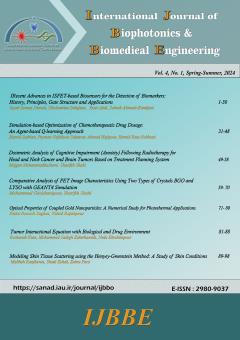-
-
-
Open Access Article
1 - Design sensitive plasmonic based 1D photonic crystal biosensor with graphene-two metal layer
Maryam Sharifi Sadeq Mohammed Ameen Mahmood -
Open Access Article
2 - Designing real-time biosensors and chemical sensors based on symmetrical photonic crystal heterostructures
maryam sharifi Habib Tajalli Hamid Pashaei Adl Payman Tajalli
List of Articles maryam sharifi
-
The rights to this website are owned by the Raimag Press Management System.
Copyright © 2021-2025


